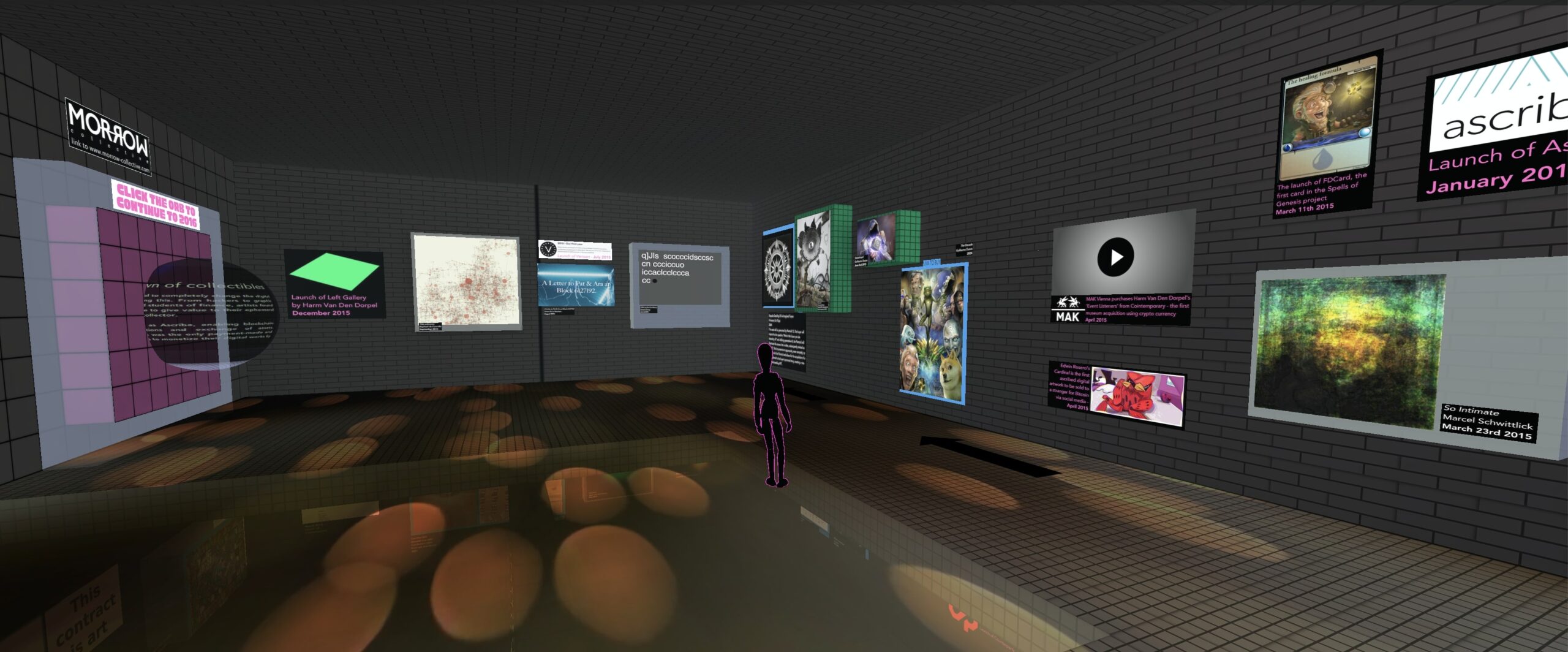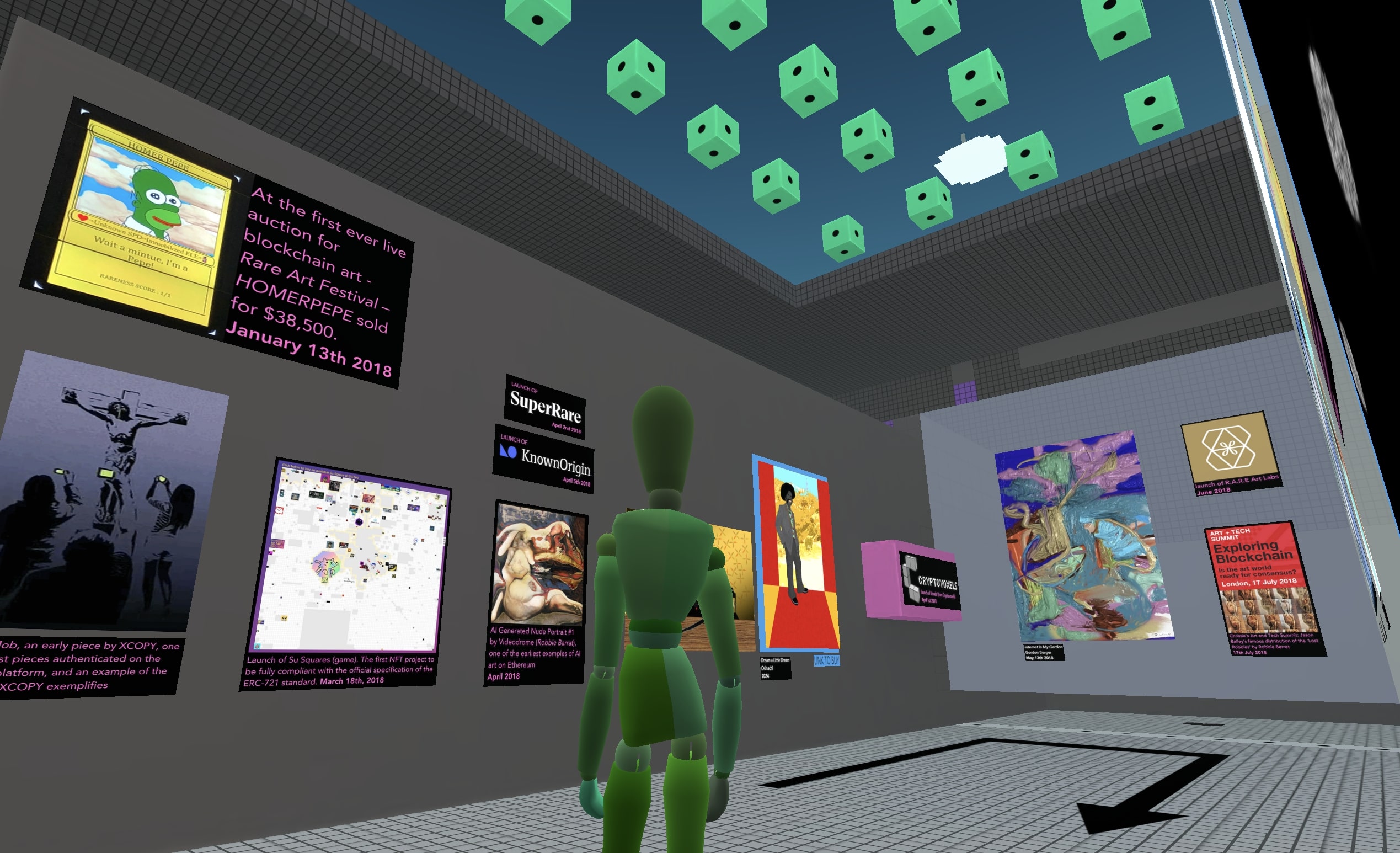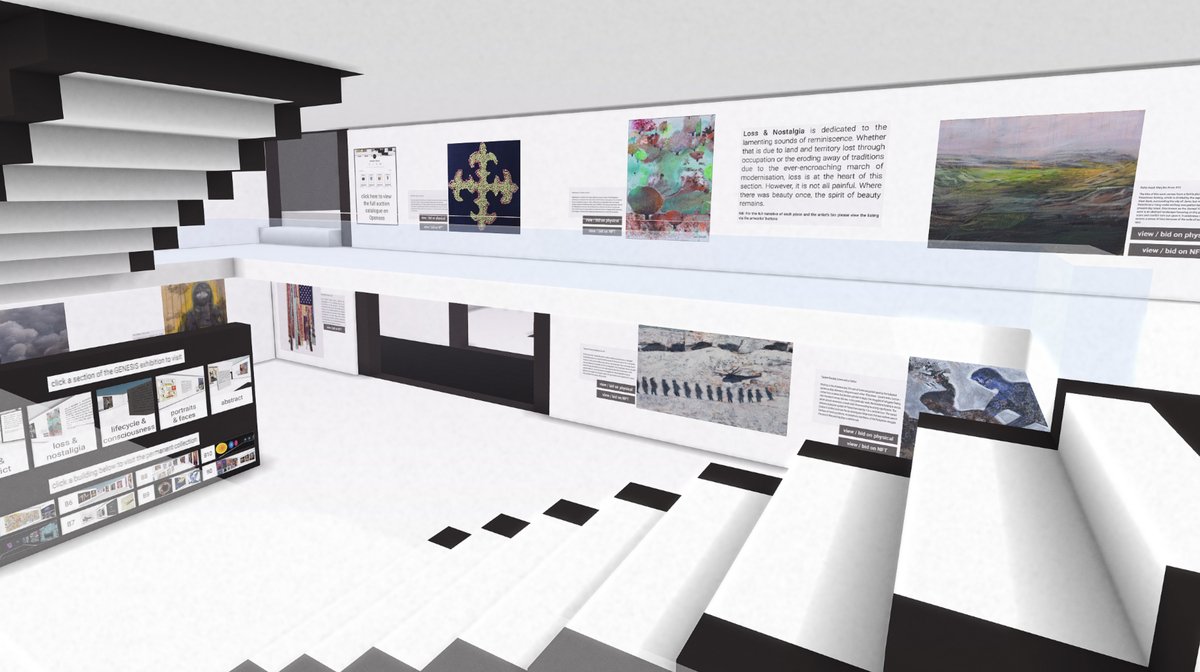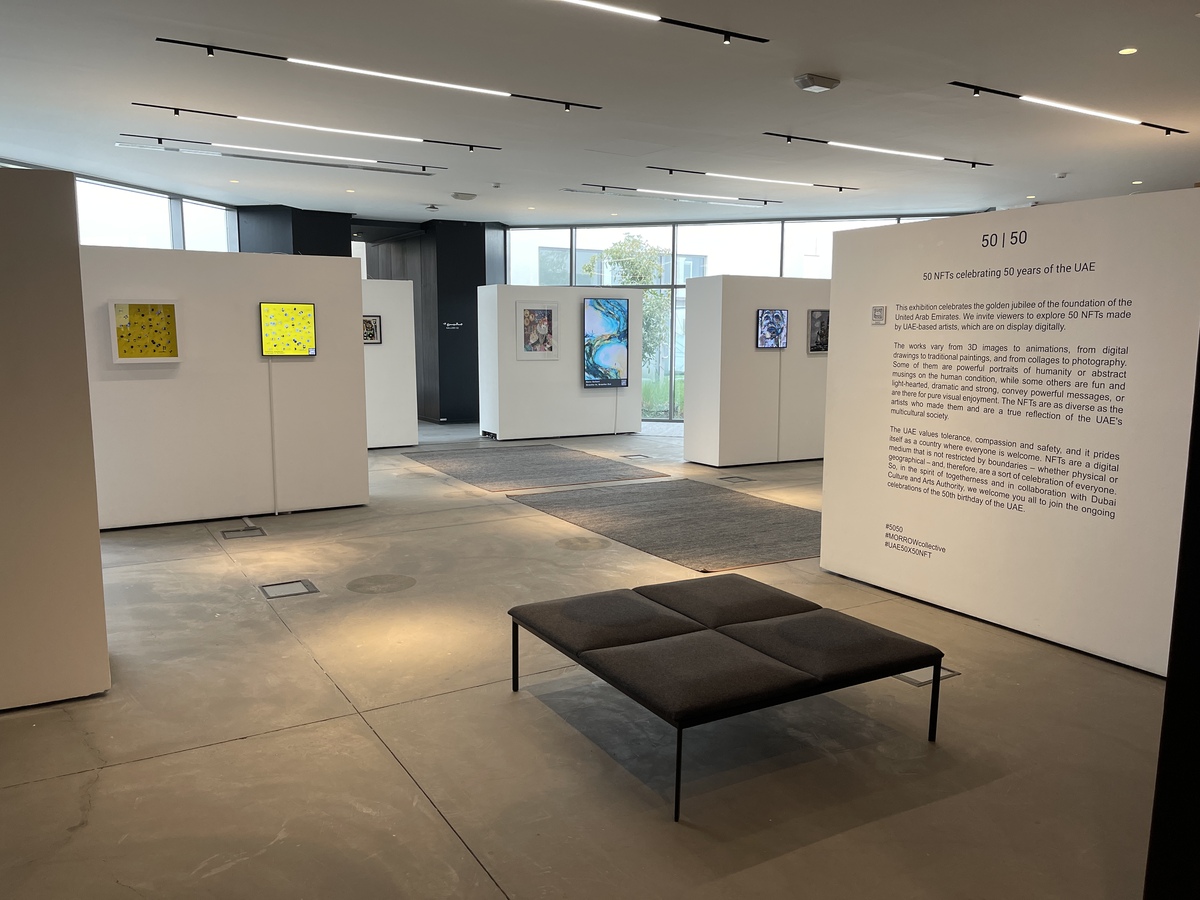Jack Kaido
A digital painter encourages the development of his chosen medium by collecting and advocating for the work of other artists.

The founding mission of Morrow, a collective based in the UAE, was to improve the level of curation in the crypto art space. Over the past three years they have explored various approaches to this task, making the case that there isn’t one way to do things in web3. Initially they worked with gallery partners but later they branched out into direct collaborations with artists. Their offerings, meanwhile, have ranged from metaverse exhibitions to art-fair booths and even a show staged in a local library in Dubai. Their latest project is “Revolutionaries”—a look back at the past decade of art and blockchains. As part of this, Morrow curated a collection for sale at Sotheby’s featuring some of the earliest artists working with the Bitcoin blockchain, such as Rhea Myers, Primavera De Fillipi, and Jonathan Monaghan. A display of these works was also presented at Art Dubai Digital 2024. Three members of the collective—Anna Seaman, Claire Harris, and Jennifer Stelco—sat down with Outland to look back at Morrow’s own key moments and explain how “Revolutionaries” came to be.

CLAIRE HARRIS Morrow Collective was a response to what we saw as a gap in the market for curation in the crypto art space. Also, it was very much a “stars aligning” moment at the start—we realized we had all the right people in the right place.
Around a week after we had sat around a table and decided this could be something, it was Art Dubai. So, we put together a business summary and pounded the pavement there for a couple of days and came out with twelve international gallery partners.
ANNA SEAMAN It was 2021, the beginning of the NFT boom. Jen was making NFTs at the time. Dave, our other founder, was very much embedded in the crypto space. And we felt there was a need for more curation in the NFT space.
We come from different professional backgrounds but work really well together—we’re also all neighbors and friends. I’m from the UK, and I started my career as a journalist. When I came to the UAE, in 2008, I was working for The National, which is a big English language newspaper here. I then specialized in art writing, which, I realized was actually quite similar to the skill of curation. They’re both about understanding what the artist is trying to say. I started doing independent curation just before Covid.
JENNIFER STELCO As Anna mentioned, I’m an artist—my background is in fine art. I started to create digital artwork, using an iPad, in 2015. I joined the NFT space in 2020 when it was all really unheard of. So, when I started working on physical exhibitions with Anna as a curator, we discussed NFTs. We ended up curating a metaverse exhibition for SuperRare at the very beginning of 2021. That might be where Morrow stemmed from.
At the start I was responsible for artist relations and animating work, and then became the metaverse architect—so I designed all our metaverse exhibitions.

HARRIS My background and role in Morrow has focused on communications strategy.
SEAMAN Then there’s our technical director Dave Shannon, who has been a passionate NFT collector for many years. He has really helped us to understand the mindset of our audiences and customers. And he’s also extremely technically knowledgeable—he’s an encyclopedia when it comes to all things blockchain.
I also want to say something about the timing of Morrow. It was serendipitous. It wasn’t intentional that we opened in March 2021, pretty much at the same time as the Beeple sale. But it meant we were positioned on this wave. We were curating exhibitions, but we were also this hub for information. We did a lot of market-building, community-building, and education around what NFTs are.
STELCO The first thing we did as Morrow was launch “Genesis,” our first exhibition in Voxels, with our brand-new gallery partners. We worked specifically with artists who were represented by a gallery—all high-profile artists who were creating their genesis digital pieces. It got a lot of press.

SEAMAN A lot of our work has been rooted in the community in Dubai and the UAE. For instance, in 2021—the year the country celebrated fifty years since its formation—we organized “50 | 50” in collaboration with the Dubai Culture & Arts Authority, displaying fifty NFTs by fifty UAE-based artists in a local library. That was an important moment for us because we had to read the market. There was an appetite from artists themselves to work with us. So, we pivoted from our original idea of partnering with galleries toward partnering with individual artists. That’s part of what the web3 landscape is—moving away from traditional art world structures.
We also organized a cultural diplomacy trip with the UAE embassy in Washington, D.C, and curated a show at Abu Dhabi Digital of work made by artists who participated in that trip.
STELCO This year, we organized “Revolutionaries”—a showcase celebrating ten years of blockchain art at Art Dubai Digital 2024. It was a huge project that initially was going to include around sixty artists. That didn’t go to plan because we lost our platform partner a month before it was going to launch. But it was still a successful project. We curated the show in two parts, “Generations” and “Origins.” “Generations” featured new work from just over thirty artists and a metaverse exhibition that Jen created in Voxels, taking viewers through the highlights of the past 10 years.
For “Origins,” we curated a collection of work by some of the first pioneers in the space who created NFTs in 2013 and 2014. Those artists were Rhea Myers, Jonathan Monaghan, Nili Lerner, Sarah Meyohas, Marguerite deCourcelle, halluciphile and Primavera De Fillipi. The works were brought to auction with Sotheby’s New York in March 2024 alongside some grails by Snowfro, Dmitri Cherniak and others.

SEAMAN It was such an honor and a privilege to work with these artists who were genuinely pioneering in their field and who were using blockchain as a medium rather than just a tool, exploring the actual philosophy behind blockchain.
One work I will mention is Jennifer and Kevin McCoy’s Cars (2014). They weren’t in the Sotheby’s auction, but they were in the Art Dubai Digital exhibition. In 2011, the artists had been living in Abu Dhabi, and they recorded footage of an Abu Dhabi car park, which they later turned into their second NFT. It was not well known, compared to Quantum. But for our stand at Art Dubai Digital, they revisited and remade that second NFT into Cars (2024).
It was a huge moment for us as a small collective to be presenting these artworks—it was the first time all these artists had been exhibited together. It was a physical show, but it was also digital. And it was a moment for us to say: You might think NFTs were a fad that died in 2023. But NFTs are just one tiny part of a much bigger picture, and very interesting chapter in the history of art and creativity.
—As told to Gabrielle Schwarz
